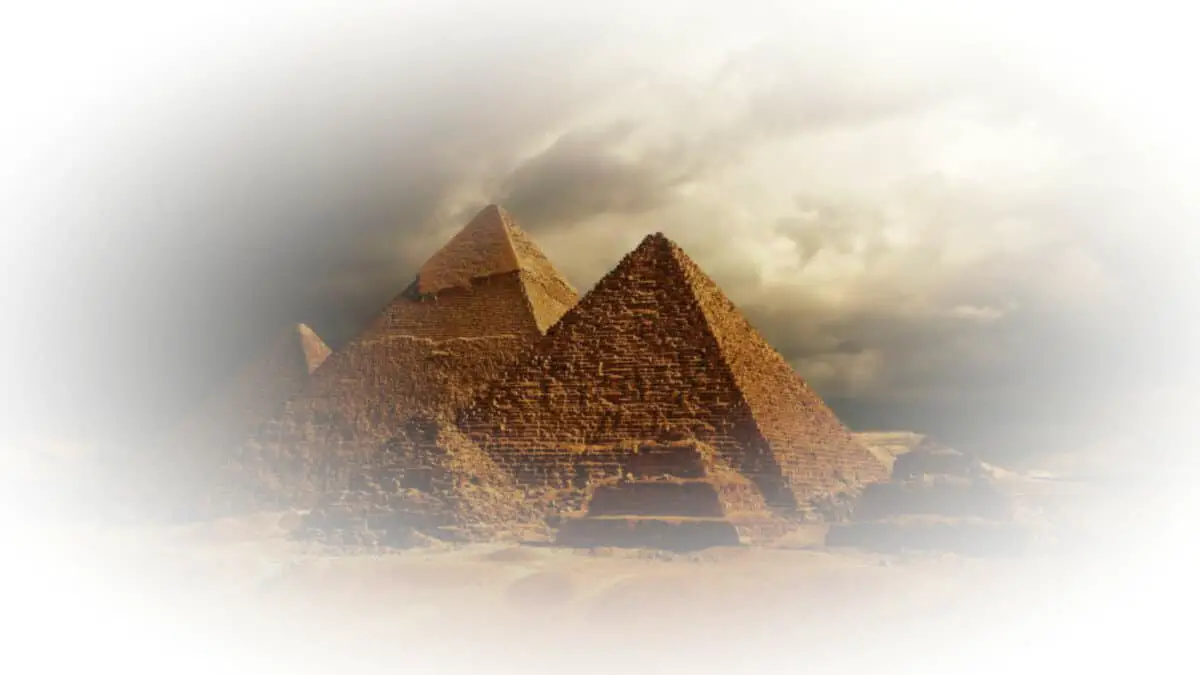Most experts agree that the pyramids are 4,500 years old ? But how do the experts know for sure how old the pyramids are?
What evidence are experts using to come to their conclusion. And how do they proves the age of the Great Egyptian pyramids at Giza.
The Great Pyramids at Giza are currently believed to be built by the Pharaoh Khufu around the year 2,550 BC.
Today, many archeologists and historians believe Khufu build the pyramids. This conclusion is based on a few factors, including previous historical records from the Greek historian Herodotus, from radiocarbon dating, and more recently from an ancient papyrus discovered in 2020.
But what does all this evidence point to, and why are some people still skeptic?
In this article we explore the question, how old are the pyramids as we examine expert opinions, perspectives, and the latest science behind all the current evidence that points to the age of the pyramids.
Let’s Dive In.
How Do We Know The True Age of the Pyramids?
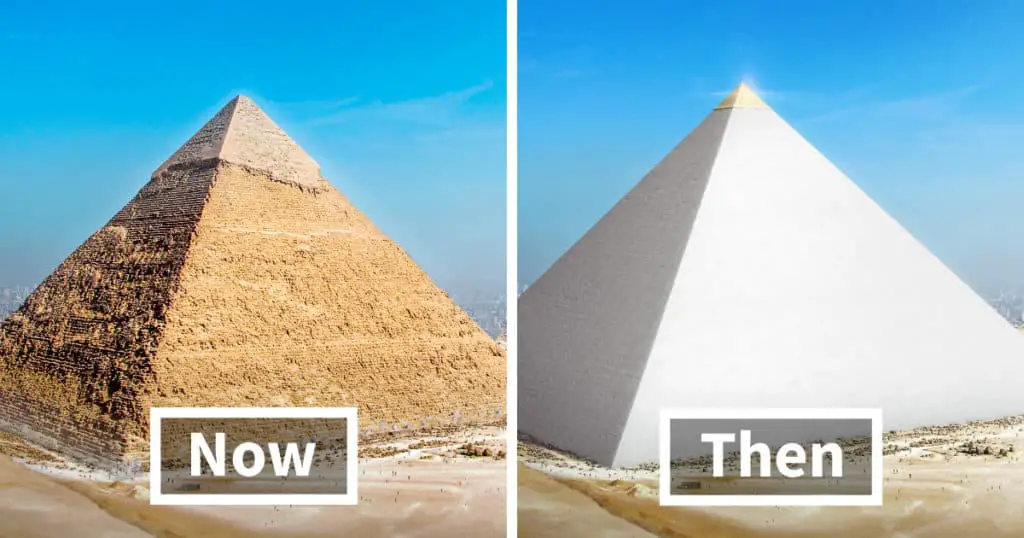
According to world renowned Egyptologist and Archaeologist Dr. Mark Lehner…,
“There’s no one easy way that we know the date of the pyramids. It’s mostly by context”
It’s important to remember that when looking to the age of the pyramids, as confirmed by Dr. Lehner, there’s no “slam dunk evidence”. But more speculation based on other evidence.
Here’s the context evidence that we do have.
Herodotus And The Pyramids –
Herodotus was a Greek historian who lived and died in the fifth century BC. Little is known about his life except that he spent most of it traveling and gaining knowledge in Egypt from locals and through cultural stories.
After Herodotus died, his writings were turned into 9 historical books. And in one of them, he details the Pharaoh Cheops (Greek for Khufu) in his efforts to build the Great Pyramid.
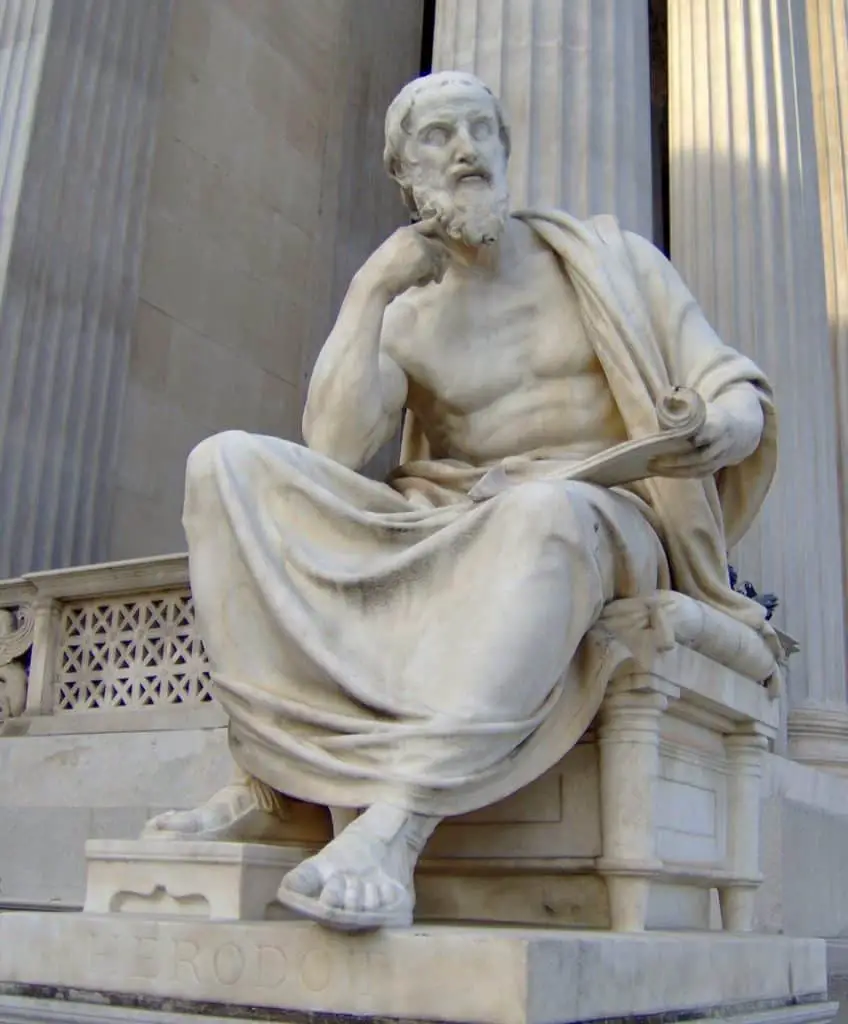
Herodotus says that it took 10 years to chisel the blocks and 20 years to erect the pyramid itself.
Herodotus’s account from 500 BC reflects back to 2,550 BC and puts the date of the Great Pyramid during the reign of the Pharaoh Khufu.
Although 500 BC was a long timer ago, Herodotus writings are still reflecting back over 2,000 years. Think about what we know today about what was going on 2,000 years ago.
Radiocarbon Dating The Pyramids–
Radiocarbon dating (also referred to as carbon dating or carbon-14 dating) is a technology first developed in the 1940’s for accurately determining the age of an ancient object that contains organic (living) material.
Organic material being anything that lives under the sun like plants and animals.
Non-organic matter like stone was formed millions of years ago so it can not be accurately be accurately carbon dated.
For the pyramid structures, archeologists dug out organic charcoal and gypsum from the grout in the core structure.
It’s through these samples they were able to get the carbon dating data.
Although skeptics are quick to point out that the age of the charcoal doesn’t necessarily mean that it corresponds to the original build date.
1984 Giza Pyramid Radiocarbon Dating –
The Initial radiocarbon dates for the Great Pyramid were funded by a group called the Edgar Cayce Foundation which was hoping to prove that the pyramids were as old as 10,500 BC.
When the data from 70 samples came back the dates ranged from 2853 to 3809 BC, which, if true, would put the Pyramid at least 400 years older than it is currently believed to be.
Because of the scientific backlash that the dates produced, pressure mounted on the team to test again.
1994-1995 Giza Pyramid Radiocarbon Dating –
In 1994 and 1995 the David H. Koch Pyramids Radiocarbon Projects funded the evaluation of some 300 samples that were taken from multiple Egyptian pyramids.
The test results were released after joint review with Dr. Zahi Hawass, and came back to at least 200 years older than previously thought, and 200 years younger than the tests in 1984.
Researchers reconciled this discrepancy by concluding that the pyramid builders may have used 200 year old wood to construct the pyramid.
Comparison Between 1984 & 1995 Pyramid Radiocarbon Dating –
According to the Archaeological Institute of America, there are significant discrepancies between 1984 and 1995 dates for Khufu and Khafre (the Great Pyramid), but not for Djoser (step Pyramid) which was consistent with all tests.
This archeology journal attests that the 1995 dates are scattered, varying widely even for a single monument. For Khufu, they scatter over a range of about 400 years
Carbon Dating Khufu’s Boat –
In 1954 Archeologist Kamal el-Mallakh re-discovered a incredibly well preserved ‘solar barge’ encased at the base of the Great Pyramid.
Experts are not quite sure how the boat was used, but some believe that it was a barge for carrying or even lifting stones as large as 3 tons.
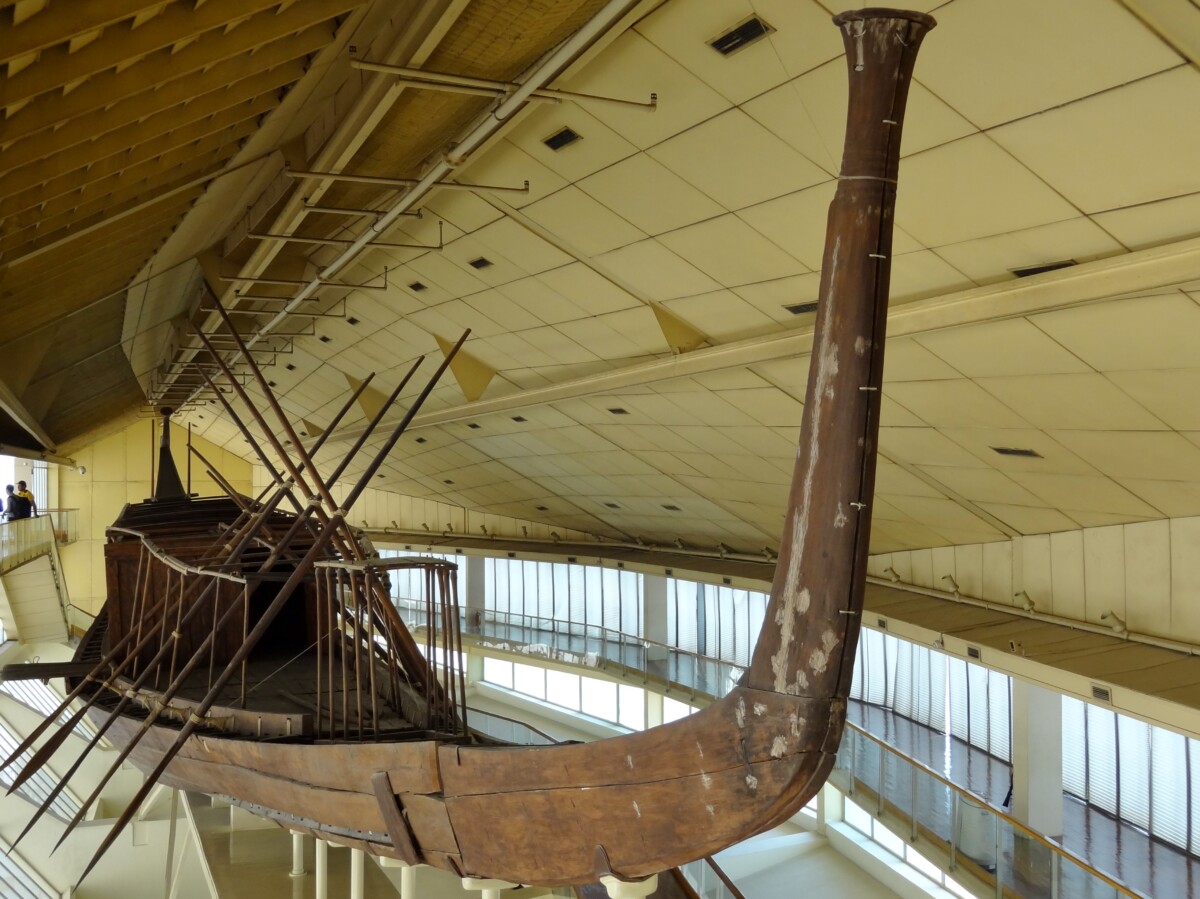
Whatever the boat was used for it has since been carbon dated back to around 2,600 BC which would place the ancient boat back with-in the range of Khufu’s rule.
The Forgotten Cedar Plank –
In 1872, British explorer and engineer Waynman Dixon removed 3 artifacts found inside of the Great Pyramid’s Queen’s Chamber. These were the only known items ever removed from the Great Pyramid.
One of these objects was a five-inch piece of cedar wood which got mislabeled and misfiled only to be found last year in a museum which is part of the University of Aberdeen in Scotland.
Carbon dating results were initially delayed by coronavirus restrictions, but once results came in they placed the wood at somewhere between 3341 and 3094 BC.
About 500 years before the assumed construction date of the pyramids.
Neil Curtis, head of museums and special collections at the University of Aberdeen, called results from the carbon dating a “revelation”.
The World’s Oldest Papyrus (Diary of Merer) –
The diary of Merer is a logbook that consists of lists and activities of the crew of a middle ranking official with the title “Inspector”. These papyri date back 4,500 years ago to the 27th years of reign of the Pharaoh Khufu.
The best preserved section of the papyrus document the transportation of white limestone blocks by boat. The papyrus does not specify what the blocks were used for, but accounts for shipping upwards of 30 blocks every few days at about 2–3 tones each. The total blocks amount to about 200 blocks per month.
A Timeline Of Pyramid Building In Ancient Egypt
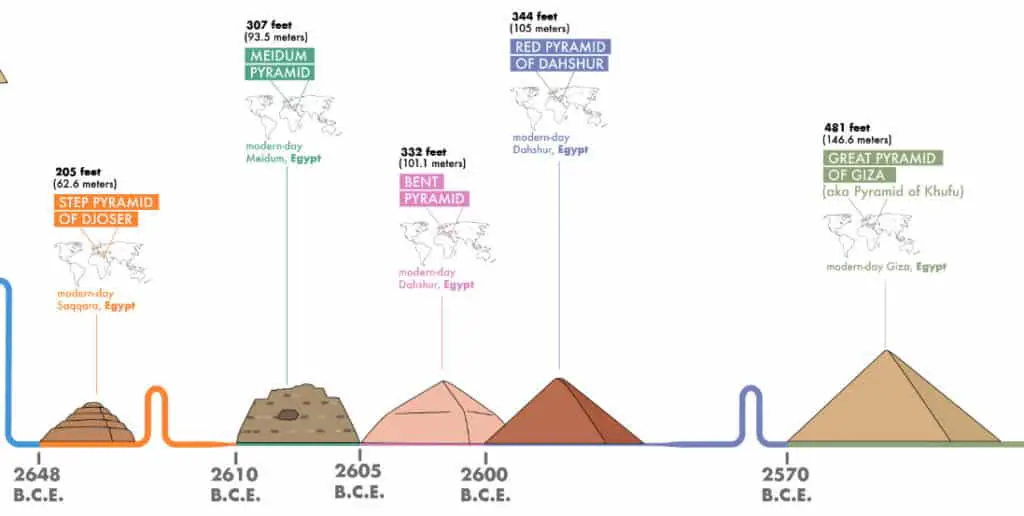
Pharaoh Djosier – c. 2670 BCE – c. 2650 BCE –
This was the first built and the Step Pyramid was designed and constructed by royal adviser Imhotep under reign of King Djoser.
Pharaoh Djosier’s step pyramid is 203’ tall, 358’ wide, and made mainly from stone block up to 5 cu’ft in size.
Pharoah Kufu – c. 2560 BCE –
Only 80 years after the construction of the Step Pyramind, the Great Pyramid of Giza is believed to be constructed by Pharaoh Khufu (Cheops in Greek).
The Great Pyramid is 481’ tall, 756’ wide and made from over 2.3 million stone blocks weighing between 1 and 10 tons.
Pharoah Kafre – c. 2530 BCE –
After Khufu died, his son Khafre built the next pyramid some 30 years later. The Pyramid of Khafre is the second largest pyramid at Giza.
Some 40’ shorter than his father’s pyramid, the Pyramind of Khafre measures 448’ tall, 706’ wide, with similar stone block construction type as the Great Pyramid.
Pharaoh Menkaure – c. 2510 BCE –
Pyramid of Menkaure is the 3rd, smallest, and least talked about of all the pyramids built at Giza.
Not much is known about Menkaure except that he was the son of Khafre and the grandson of Khufu.
The Pyramid of Menkaure measures 215’ tall, 356’ wide, and also constructed in similar fashion to the other two Giza Pyramids. In addition to this Pyramid, Menkaure also built a temple with stones weighing up to 200 tons each.
Why Do Some People Think The Pyramids Are Much Older Than Previously Thought?
With all the known history, written evidence, and carbon dating, why do some people still believe that the Pyramids are much older?
It is clear that much work was done on the pyramids during the reign of Khufu and his children, but some experts wonder…
Did Khufu build the pyramids, or did he discovered them and re-built or restored them?
With the discovery of Göbekli Tepe we know have hard evidence of a fairly advanced civilization over 10,000 years old (in modern day Turkey), who had the ability to lift mega stones weighing in at as much as 50 tons.
Is it possible that the Pyramids were built around the same time?
Here’s why some experts believe this may be the case.
Plato And Atlantis –
The ancient Egyptian believed, as legend has it, that the Egyptian Civilization was formed around 3,000 BC as part of a previous civilization that had survived a cataclysmic catastrophe thousands of years beforehand.
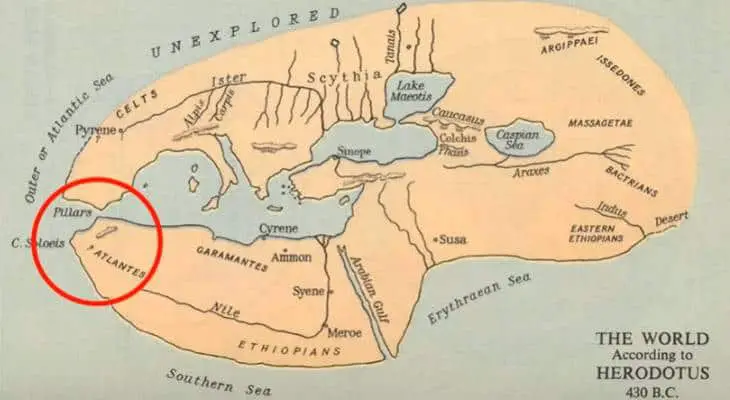
This story was spread around the world by famed Greek philosopher Plato who was a student of Socrates.
When Plato wrote “Timaeus“, (which was the name of one of his dialogs) in 360 BC, he references his uncle, Salon, who had visited Egypt 200 years earlier around 580 BC.
According to Salon he transcribed ancient records which detailed the existence of Atlantis and placed it as the origin of the Ancient Egyptian Civilization around 10,500 BC.
Technology Gap Between Pyramids –
Aside from Plato’s accounts, other experts look at the construction of the pyramids themselves as proof that they could not have been built with Bronze Age technology.
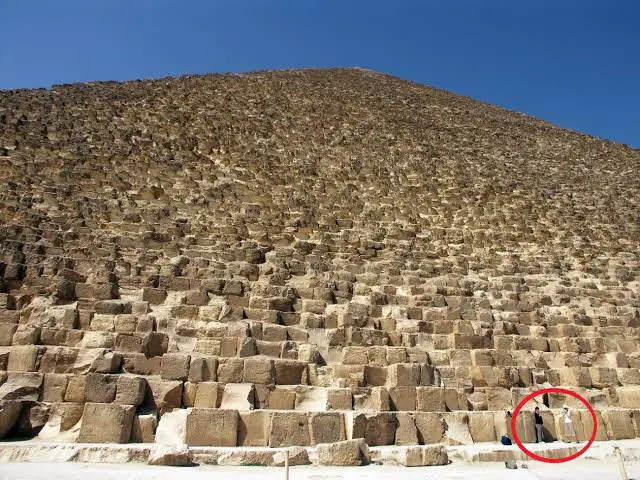
When King Djoser’s Pyramid was built in 2,650 BC, it was built some large stones, but with mostly stones of manageable size and weight (about 1’x1’x1’). These stones which were stacked on top of one another to form the Step Pyramid at a height of 203’ tall.
However only 80 years later, the same civilization was able to cut and hoist 2.3 million stones weighting 2-3 tons in weight, to a height of 481’ and with the mathematical precision to align directly with North, South, ,East & West directions, and to be sized in direct proportion to the exact size of the Earth.
That’s a large advance in ability for only 80 years difference at that time period.
Experts are still, to this day, baffled to the exact construction methods used to hoist the blocks into place. There is no known accurate historical or archaeological evidence that definitively resolves the question.
Pyramid Alignment With The Stars –
the Orion Constellation Theory –
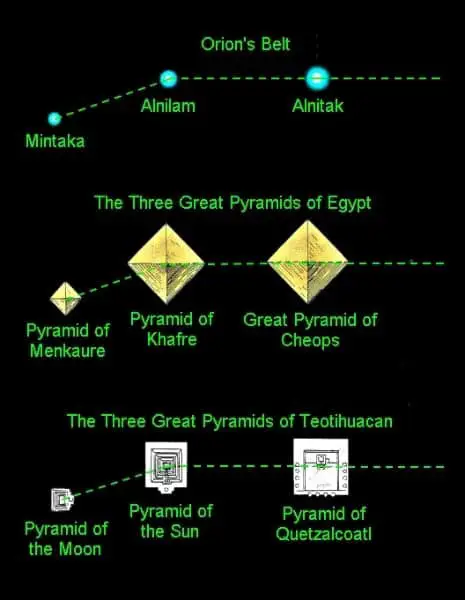
Alternative timeline theories suggest that the pyramids were built to align with the constellation ‘Orion’s belt’. The connection between the stars and the pryamids was first pointed out by Dr. James J. Hurtak in 1973 and later popularized by Egypt born author Robert Bauval.
Th problem with the Orion constellation theory, is that in order for the pyramids to align with the Orion galaxy it would push their construction date back to 10,500 BC.
“Mainstream” archeologists have not accepted the Orion theory claiming that The Giza Pyramids are aligned as they are so that they can be seen by people, especially kings travelling down river from Memphis.
the Cygnus Constellation Theory –
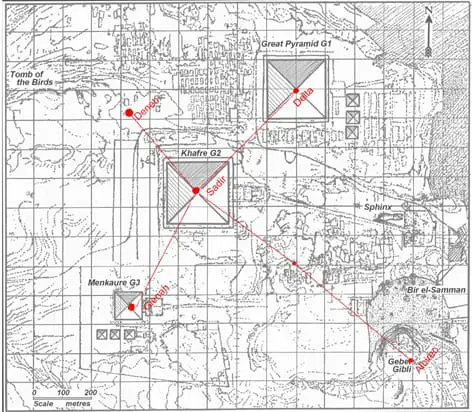
Similar to the Orion Constellation Theory, the Cygnus Constellation Theory also subscribes to the notion that the pyramids were built in alignment with the stars.
However, instead of aligning with ‘Orions Belt’, author Andrew Collins suggests that the pyramids align with the setting constellation of Cygnus.
This is not merely a suggestion, but a calculated mathematical correlation. It was through the research of the Cygnus theory that Egyptological researcher Nigel Skinner-Simpson was able to find and locate the bird tomb entrance to an underground cave system in 2008, which had been lost for over 200 years.
Collins acknowledges that both the Orion and Cygnus Theories seem to match and that there’s too much of a coincidence for neither to be true.
the Sphynx And the Leo Constellation Theory –
Currently, the sphinx is not aligned with any stars or constellations. However, An argument put forward by Bauval (mentioned above) and journalist Graham Hancock believe that the construction of the Great Sphinx was around 10,500 BC.
They believe this in part, because of the layout and orientation of the Sphinx, the Giza pyramid complex and the Nile River are an accurate reflection or “map” of the constellations of Leo, Orion (specifically, Orion’s Belt) and the Milky Way, respectively.
In the year 10,500 B.C. the sphinx would have been perfectly aligned with the constellation Leo.
Around this same time period the 3 largest pyramids of Giza would have also been aligned with the stars in Orion’s Belt.
We explored the erosion patterns and the Age of the Sphinx In This Article If You Want To Dive Deeper Into The Subject
Conclusion
The exact age of the pyramids is not known for sure. What we definitely know is that the Pharaoh Khufu certainly conducted renovations and maintenance to the Pyramids if he wasn’t the original builder.
Since stone itself cannot be carbon dated, the samples took rely heavily on assumptions and are a bit scattered in nature.
However most evidence that we have today does point towards the construction during the reign of Khufu, but still many questions are left wide open.
Dismissing other theories that seems to fit quite well, while accepting the ‘mainstream’ theory which also has glaring gaps (like how the pyramids were even built) seems just as irresponsible as blindly accepting any theory.
Based on the evidence it seems clear that there is a lot more to uncover. And that theories of the past may be leading us to dead ends in the future.
Let me know what you guys think?
Check Out Our Other Interesting Articles About Ancient Egypt…
- The Ankh (unk) Symbol: Ancient Egyptian Meaning
- How Old Are The Pyramids in Egypt? The Science
- How Old Is The Great Sphinx of Giza ? New Evidence
- What Is The Egyptian Eye Of Ra ? Symbolism Explained
- The Eye of Horus vs. The Eye of Ra | Meaning
- Did Ancient Civilizations Use Psychedelics? You Bet They Did !
- Scarab Beetle Symbolic Meaning | History & Origin
Loved what you read?
Hit that share button and let the world in on the secret – we’d be thrilled!
Got thoughts? We’re all ears for your feedback, corrections, or a good old chat. Don’t be shy; drop us a line.
And hey, don’t miss out on our curated list of must-reads in the recommended books section.
Big thanks for diving in with us today!


